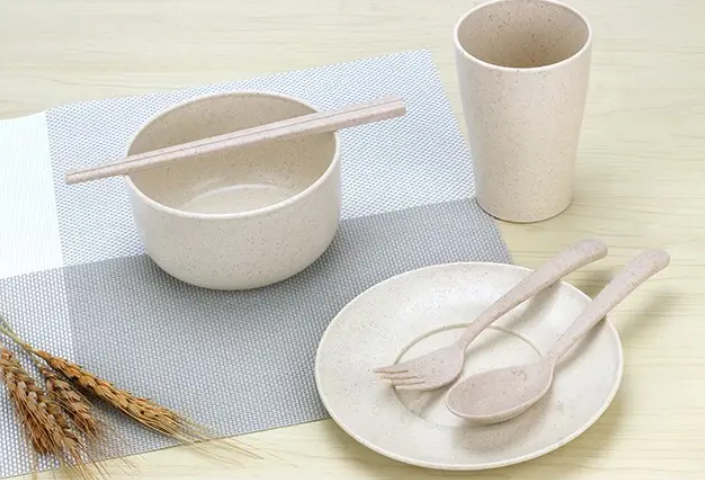Global Leading Automatic
Production Base of Eco Cup Lids
Production Base of Eco Cup Lids
Biodegradable paper plates are a type of environmentally friendly tableware that has been widely used in recent years.
Biodegradable paper plates are a type of environmentally friendly tableware that has been widely used in recent years. This type of tableware is loved by consumers because of its lightness and degradability. As a kind of environmentally friendly tableware, biodegradable paper plates claim to be "green" and "recyclable", and are highly sought after by consumers. However, are such products really as good as advertised?

In order to understand the quality difference between biodegradable paper plates and ordinary tableware, and help consumers to better choose and use such products, Shanghai Consumer Rights Protection Committee conducted a comparative test on 30 pieces of disposable tableware sold on the market, including 17 pieces of nominally containing biodegradable paper plates, 13 pieces of ordinary disposable tableware.
Migration of Hazardous Substances
Raw materials, inks, adhesives, additives, etc. for the manufacture of ordinary plastic tableware will contain non-volatile harmful substances, including melamine, formaldehyde, etc. The national standard stipulates upper limit requirements for total migration, specific migration of melamine and formaldehyde, among which total migration ≤10mg/dm, specific migration of melamine ≤2.5mg/kg, and total specific migration (calculated as formaldehyde) ≤15mg /kg. The test found that all 30 samples met the standard requirements.
material
The surface and inner layers of the 28 samples were made of melamine-formaldehyde resin, and urea-formaldehyde resin and polyurethane were detected in 2 samples respectively. The main material of the inner layer was detected to contain urea-formaldehyde resin, and urea-formaldehyde resin was not allowed by the national standard. Plastic resins for food contact products In the list, it is easy to precipitate formaldehyde and urea in use, and its safety and durability are not as good as melamine formaldehyde resin.
The data shows that the main material inside and outside of the biodegradable paper plates is melamine formaldehyde resin, but a certain proportion of bamboo fiber filler is added, which is no essential difference from ordinary melamine tableware.
Moisture and heat resistance and stain resistance
Disposable tableware often goes in and out of the kitchen, and it is inevitable to place or use it in a humid and hot environment. "High temperature resistance" and "not easy to break" are often the "selling points" promoted by merchants. In addition, whether the tableware is resistant to dirt during use, whether the color of the food and whether the residue is easy to contaminate the tableware is also an aspect that consumers care about.
The inspection found that 5 samples had cracks in the damp heat resistance test, 4 samples had poor pollution resistance, 3 of which were disposable plastic tableware and 1 was biodegradable paper plates. After relevant tests, there was obvious pollution.
Consumer Tips
When purchasing, first, check whether the biodegradable paper plates have chromatic aberration, spots or mottled colors, whether the surface of the biodegradable paper plates is smooth, and whether the bottom is flat. If there are decals on the surface of the tableware, check whether the pattern is clear and there are no wrinkles or air bubbles. The second is to smell the non-irritating smell of the food; you can use a white paper towel to wipe the colored part of the food repeatedly to judge whether there is fading and other phenomena. Generally, it is safer to choose white or light-colored tableware. The third is to treat product promotion rationally. Some bamboo fiber tableware with concepts such as "green", "environmental protection" and "safety" are essentially melamine tableware.
In terms of use, first, strictly follow the product instructions, avoid using it under high temperature conditions, especially do not use it in a microwave oven, and do not use it in an environment with a large temperature difference, and do not use it for a long time at high temperature to store acidic and oily food. Second, when cleaning melamine tableware, try to use a softer rag, do not use strong acid and alkali detergents, and do not use steel wire cleaning balls to avoid rubbing hair tableware and damaging the surface structure. Third, the melamine tableware has obvious discoloration or cracks, which must be replaced in time. According to a special statement of the Shanghai Consumer Rights Protection Commission
